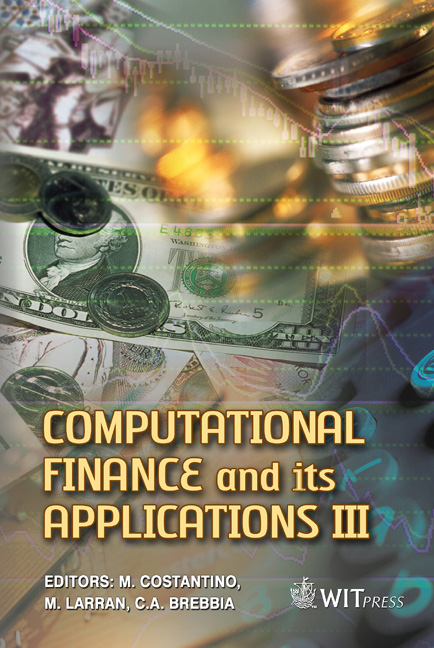An Empirical Investigation Of The Short-term Relationship Between Interest Rate Risk And Credit Risk
Price
Free (open access)
Volume
41
Pages
12
Page Range
185 - 196
Published
2008
Size
724 kb
Paper DOI
10.2495/CF080181
Copyright
WIT Press
Author(s)
C. Cech
Abstract
Empirical results from several studies indicate that changes in interest rates and changes in credit spreads are negatively related in the short run. These findings are further investigated by examining the dependence structure between interest rate and credit risk factor changes that are computed from sovereign and corporate bond indices. Several copulas (Gaussian, Student t, BB1, and Frank copula) are calibrated and their goodness-of-fit is compared. No clear pattern of the dependence structure can be observed as it varies substantially with the duration and – concerning the credit risk factor changes – the rating of the obligors. The Student t copula’s fit in terms of the AIC goodness-of-fit measure is superior to that of all other copulas. The null hypothesis of a specific copula being the true copula can be rejected for the Student t copula in the least cases. Additionally employing a likelihood-ratio test, the null hypothesis of a Gaussian copula can be rejected in favour of a Student t copula. The Gaussian copula seems to underestimate the probability of joint strong risk factor changes, while the Student t copula seems to overestimate it. Keywords: copula, dependence, short-term, interest rate risk, credit risk, risk measurement. 1 Introduction Credit spreads, the difference in yield between corporate and government bonds of similar maturity, reflect the credit risk associated with corporate bonds. The dependence of interest rate risk, i.e. the risk associated with changes of the interest rate term structure, and credit risk, i.e. the risk associated with ratingmigrations or defaults of obligors, is an interesting topic to explore in the context
Keywords
copula, dependence, short-term, interest rate risk, credit risk, riskmeasurement.





